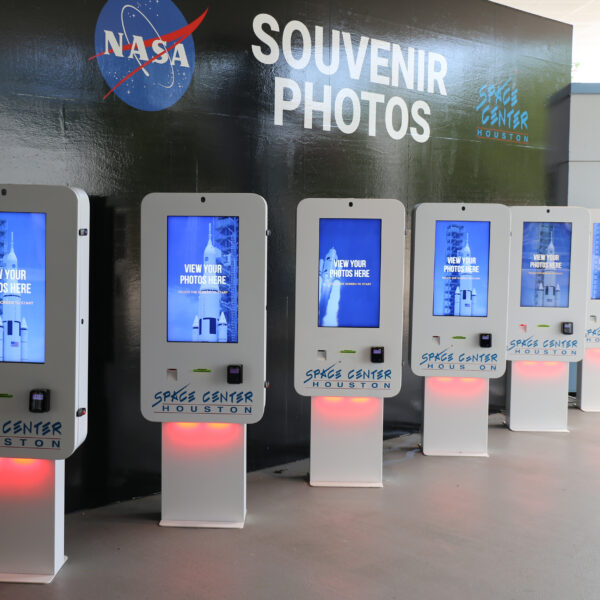
Kiosks
Close
Kiosk Industries


While kiosks and retail displays can be manufactured out of many materials, metal is a common choice. As an enclosure, it’s tough, yet pliable, and has a wide range of uses. However, a major disadvantage with metal is its susceptibility to rust and corrosion if left exposed over time. That’s where powder coating comes in as a solution.
Powder coating involves the application of a finely ground pigment and resin mixture onto metal surfaces (or, in some cases, specific types of wood). This powder is then fused onto the material through a high-temperature baking process. The bonding method from powder coating differs from a traditional paint application and enhances the durability of the metal, extending the lifespan of a kiosk enclosure or display.
The process begins with the metal parts being put through multiple solvent baths to remove any grease or oil from the surface. This ensures a proper adhesion for the coating. From there, the pieces are dried and then the powder coating process begins.
The metal is hung from a static-charged line that passes the charge along to the pieces to be coated. The powder coating is then sprayed onto the statically charged pieces, which cause the powder to cling to the surfaces.
Once covered with the powder coat, the metal then goes into an extremely hot oven that bakes the powder onto the metal, bonding the two together.
Powder coating should not be confused with paint, which is less expensive. Paint is simply a thin layer of color, but powder-coating is much thicker and offers an additional layer of protection from corrosion, UV rays, and chemicals than traditional paint.
Powder coating effectively acts as a shell to the metal underneath it, while still offering an equally wide array of colors as paint. In fact, paint cannot be applied to powder coating because it will not stick.
With the many advantages of powder coating, there are some challenges to be aware of. First, it’s important to watch for any pooling of the coating on the products during the application process.
Second, additional powder coating layers can be added to change the color, texture, or finish. However, because each layer is so thick, adding too many layers can easily alter measurements, which can be a problem in tight spaces. For instance, screw holes or space to insert a touchscreen can be restricted by too many layers of powder coating.
While powder coating can be removed, it requires being burned off at high temperatures, which can compromise the integrity of the metal underneath. The reason for this is due to the process through which it is applied. Powder coating has a tighter bond with the metal underneath, giving it more durability and eliminating the possibility of peeling away from the metal’s surface.
Because powder coating involves dry application, it can be confusing whether different finishes or textures are an option. Fortunately, they are!
Powder coatings can have glossy, matte, or satin finishes, each of which comes with its own considerations. A glossy finish can reflect light beautifully, but it’s also most likely to show scuffs, fingerprints, and watermarks.
On the other end of the spectrum is a matte finish. Matte finish texture options range from fine to course. Matte finishes are better at hiding the wear and tear that a gloss shows, but it is much harder to clean. Because a matte finish contains texture, the process of cleaning it can be arduous, as fibers from the cleaning cloth or sponge tend to stick.
A happy medium between gloss and matte is a satin finish. More often than not, satin will be the go-to choice, specifically for outdoor kiosks and displays. Its barely-there texture is enough to hide marks while remaining easy to clean.
As previously mentioned, powder coating is also available in just as many color options as paint, some of which are readily available as stock colors. However, custom colors are available for an increased price.
Powder coating provides metal parts of kiosks and displays with additional protection by acting as a shell, preventing rust and delaying corrosion. With its wide variety of colors, finishes, and textures, finding the perfect fit for your display or kiosk enclosure has never been easier.